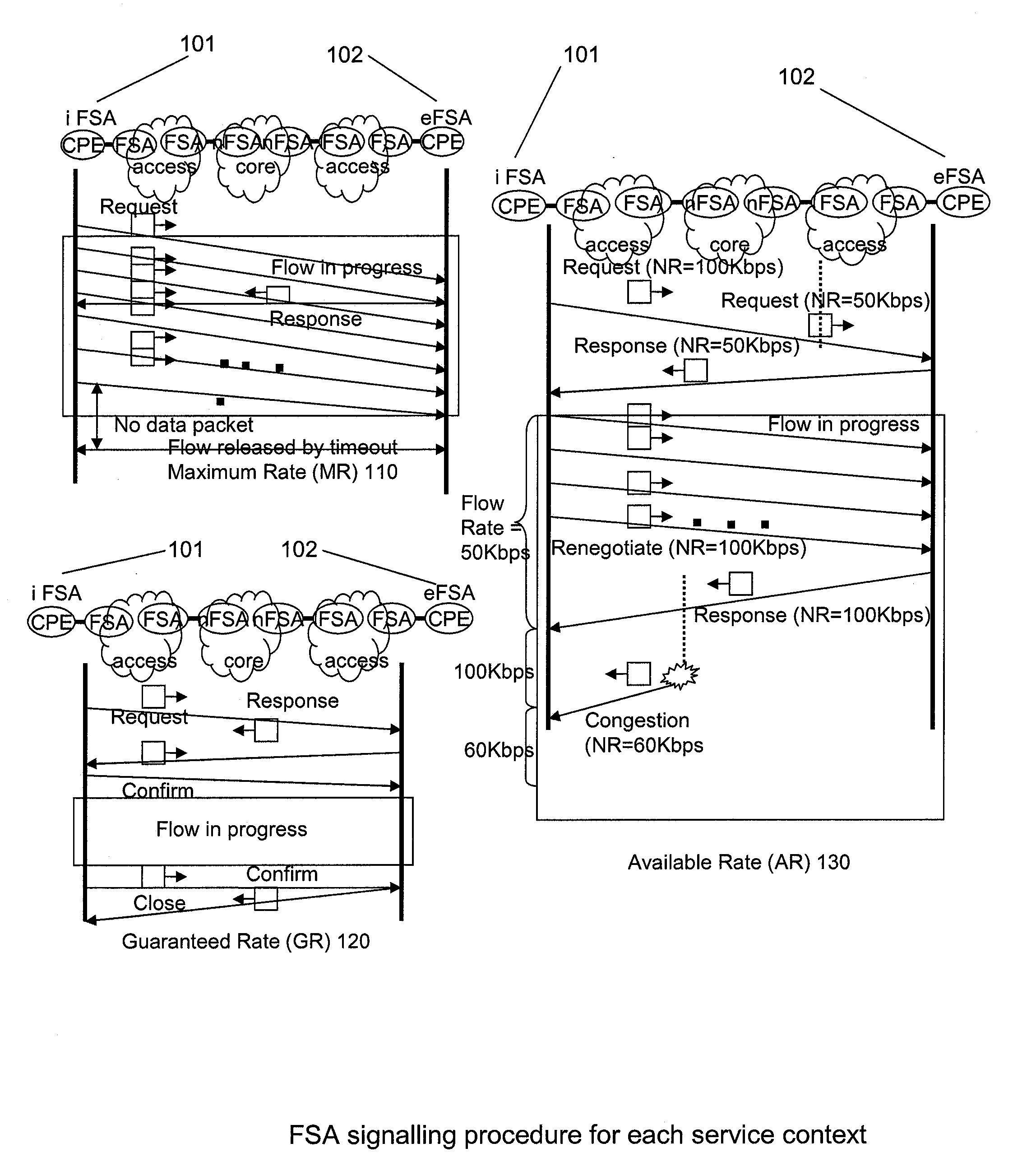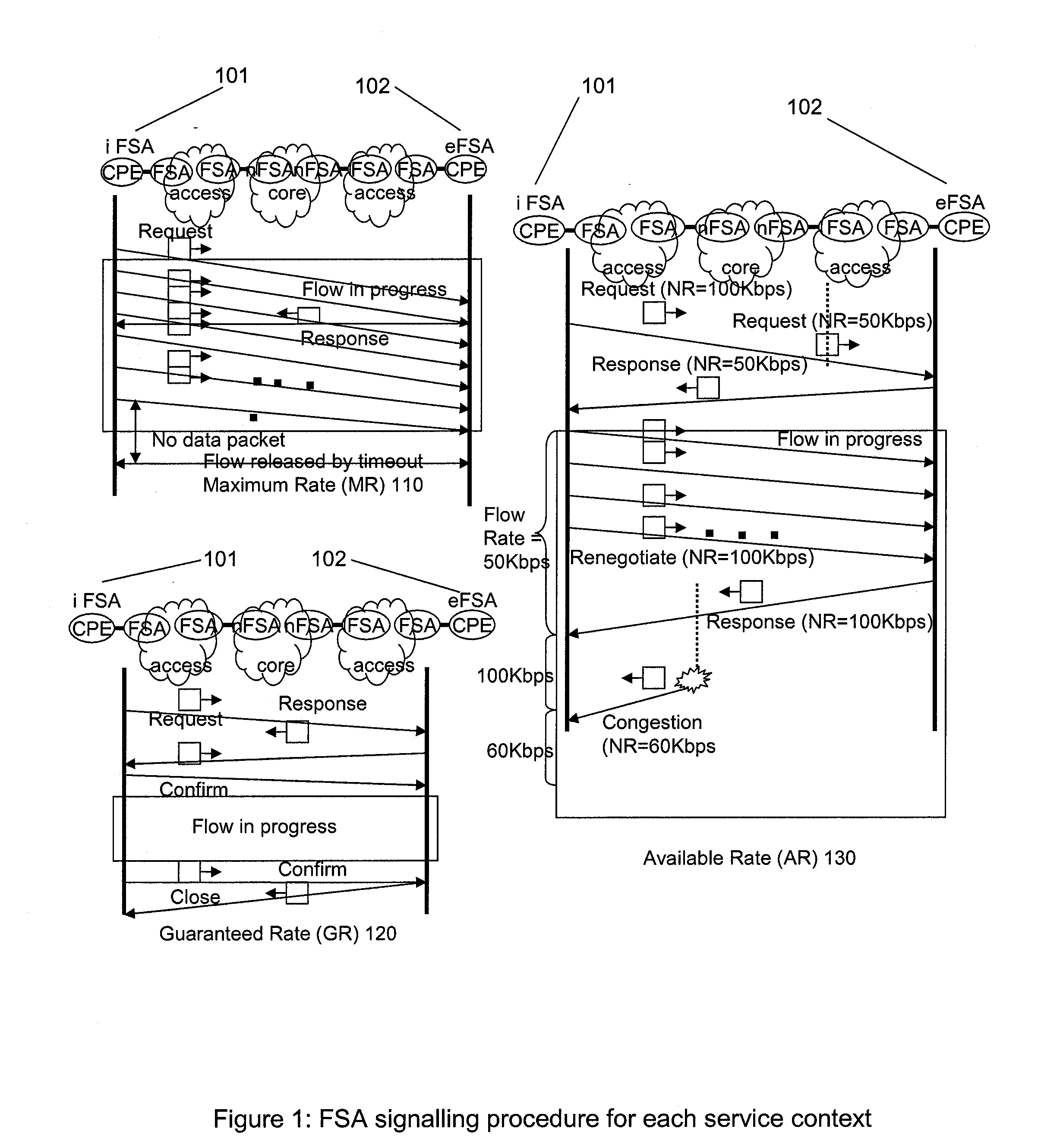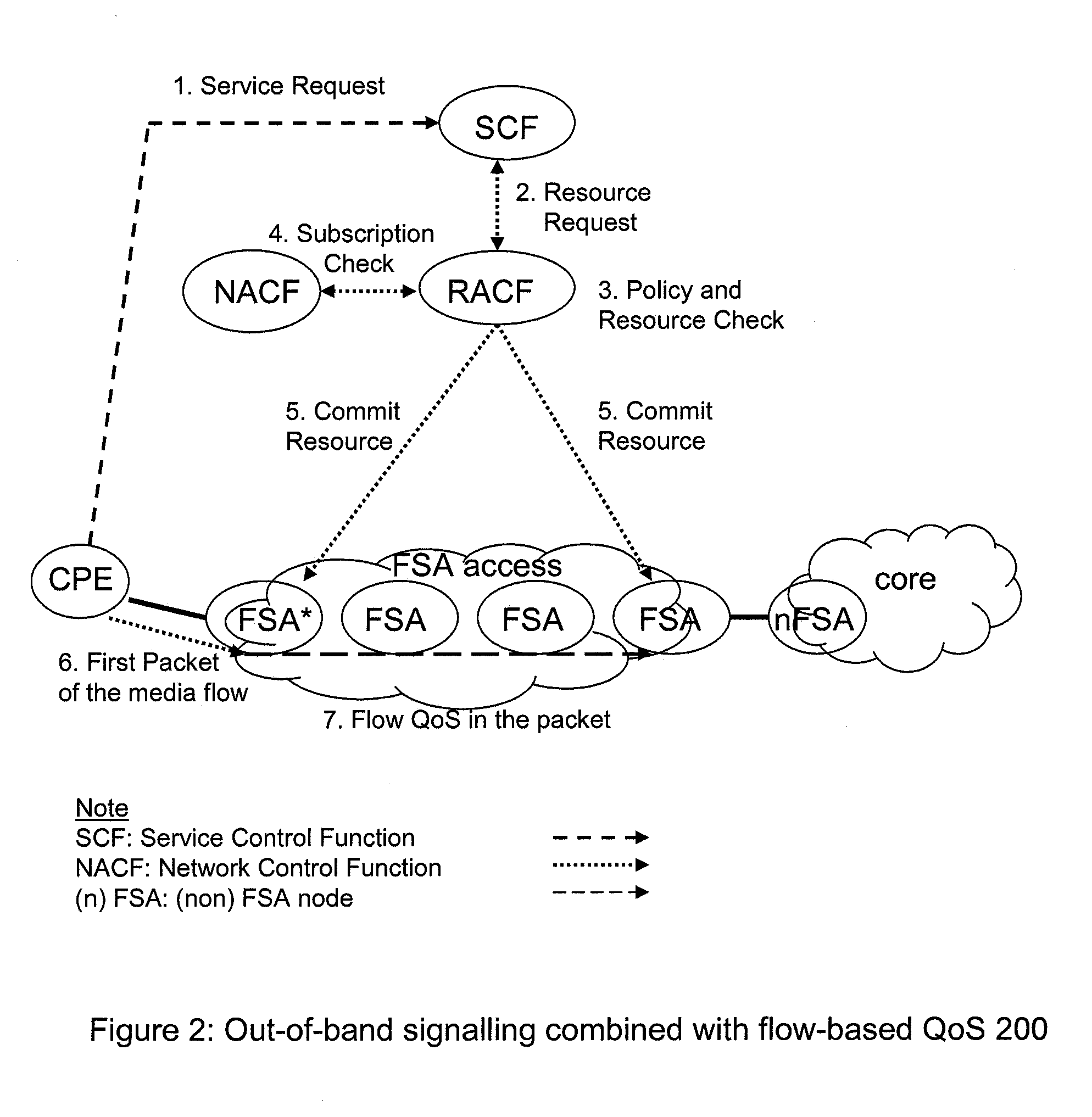Flow State Aware QoS Management Without User Signalling
a flow state and user signal technology, applied in the field of communication network and a method of operating a communication network, can solve the problems of unsuitable video flow, adverse effects on all users, and reduce the sending rate of senders, so as to increase the quality of service offered
- Summary
- Abstract
- Description
- Claims
- Application Information
AI Technical Summary
Benefits of technology
Problems solved by technology
Method used
Image
Examples
first embodiment
[0142]FIG. 4 relates to the first preferred embodiment and shows an expansion of the function 6, containing sub-function 6.1 to 6.4. The size of buffer 6.1 is based on the following considerations. Firstly, as all flows are being policed at input 6.2 against their individual capacity allocations, it is possible to arrange the operation to be such that the sum of all capacity allocations is never larger than the output link capacity. In such a case, only the simultaneous and independent forwarding of packets from two or more input links to the same output link would cause the need for buffering at the output. But two other conditions are considered within the scope of this present first embodiment of the invention:[0143]Sudden surges of traffic on to a specific output link, for example due to traffic being re-routed following a link failure. This may happen, for example, in some applications where alternative paths are established between the content source and a group of receiving e...
third embodiment
[0184]In another embodiment, this delay interval may be a pre-determined fixed short interval. In a third embodiment, every packet is automatically delayed for a pre-determined fixed short interval, but function 6.5.4 is informed only of those that are to be examined for possible deletion as described next.
[0185]If the Control Function 6.5.4 detects there is already a delayed packet for the same aggregate identity (e.g. there is already a delayed packet waiting to go to the same given end-user), then function 6.5.4 proceeds as follows:[0186]If any delayed packet of this same aggregate identity belongs to a flow with flow status “vulnerable to discard”, function 6.5.4 instructs function 6.5.2 to delete that packet[0187]If there are no such packets that can be deleted because of the “vulnerable to discard” status, the lowest preference priority packet is deleted from the Delay / Deletion function 6.5.2[0188]The state of the flow id of this deleted packet is changed to “vulnerable to di...
PUM
 Login to View More
Login to View More Abstract
Description
Claims
Application Information
 Login to View More
Login to View More - R&D
- Intellectual Property
- Life Sciences
- Materials
- Tech Scout
- Unparalleled Data Quality
- Higher Quality Content
- 60% Fewer Hallucinations
Browse by: Latest US Patents, China's latest patents, Technical Efficacy Thesaurus, Application Domain, Technology Topic, Popular Technical Reports.
© 2025 PatSnap. All rights reserved.Legal|Privacy policy|Modern Slavery Act Transparency Statement|Sitemap|About US| Contact US: help@patsnap.com



